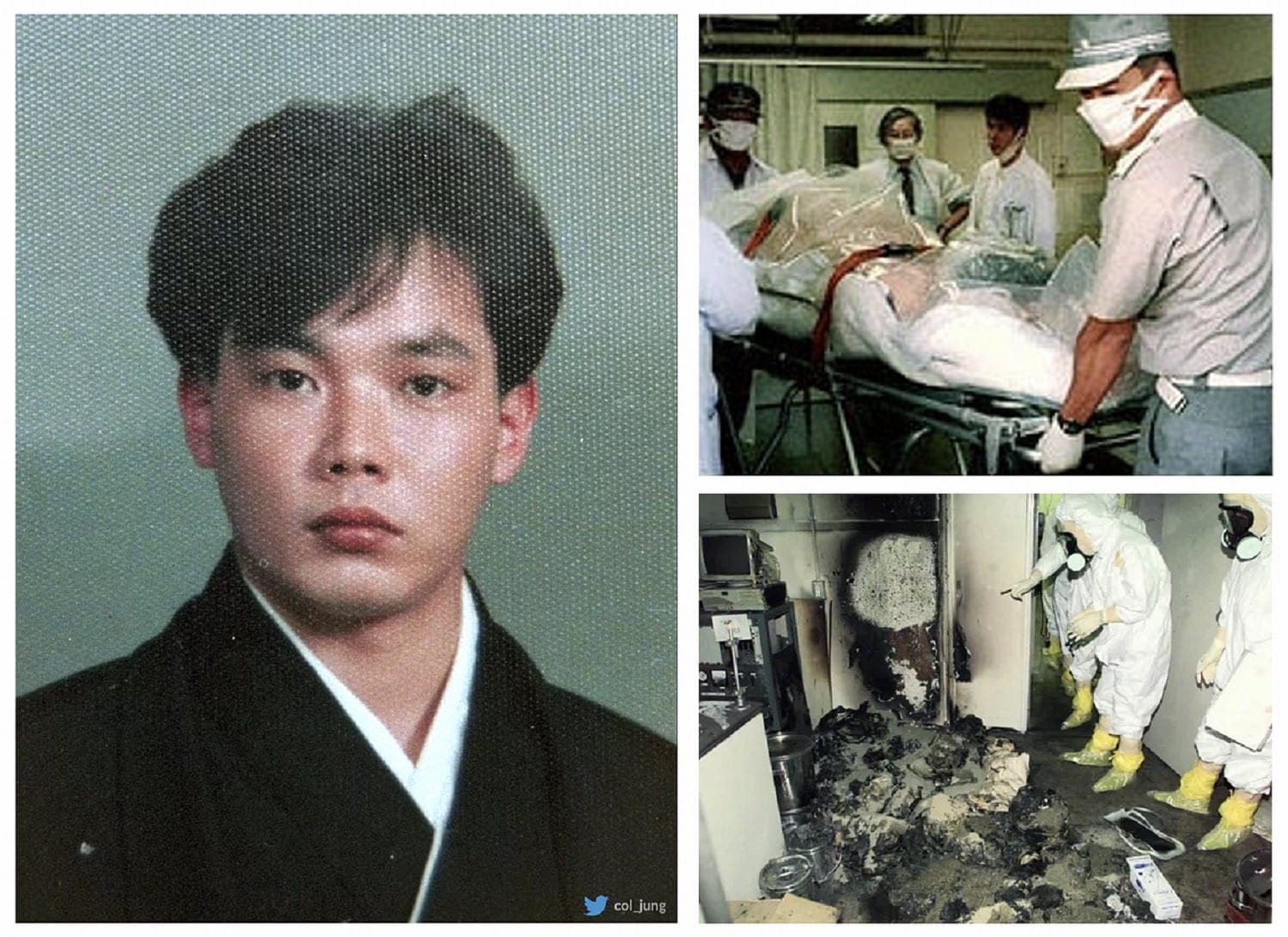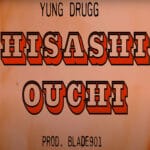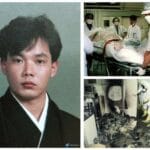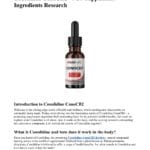This article delves into the harrowing experience of Hisashi Ouchi, a Japanese nuclear technician who became a poignant symbol of the human cost of nuclear accidents. We will explore his 83-day struggle with acute radiation syndrome following the Tokaimura nuclear accident, examining the medical interventions, the ethical dilemmas, and the lasting impact of his tragic story.
Hisashi Ouchi Pictures: A Glimpse into the Ethics of Viewing Suffering
The 1999 Tokaimura nuclear accident in Japan tragically thrust Hisashi Ouchi’s story into the spotlight. His experience, marked by unimaginable pain and suffering, often sparks a morbid curiosity, with people seeking Hisashi Ouchi photos and Hisashi Ouchi real photos to grasp the reality of his condition. While this desire for visual understanding is natural, it’s crucial to approach it with caution and sensitivity, acknowledging the ethical implications of viewing images of another person’s suffering.
On September 30, 1999, Ouchi and two colleagues were working at a uranium reprocessing facility when a criticality accident occurred. This accident exposed them to lethal doses of radiation. Ouchi, who was closest to the source, received the highest dose—an estimated 17 sieverts, far exceeding the lethal limit.
The radiation’s effects were immediate and devastating. Ouchi experienced excruciating pain, nausea, vomiting, and difficulty breathing. His skin blistered and peeled, his internal organs sustained severe damage, and his immune system rapidly deteriorated. Doctors at the University of Tokyo Hospital fought tirelessly to save him, employing experimental treatments, including blood transfusions, skin grafts, and stem cell transplants. However, the damage was irreversible.
Ouchi’s 83-day ordeal was marked by unimaginable suffering as his body slowly succumbed to the radiation’s devastating effects. His story raises profound ethical questions about the limits of medical intervention and the importance of respecting a patient’s wishes, especially in the face of such overwhelming pain and little chance of recovery.
How Old Was Hisashi Ouchi When He Died?
Hisashi Ouchi passed away on December 21, 1999, at the age of 35. His death, after 83 agonizing days, ignited a firestorm of debate about the ethics of prolonging life in situations where suffering is extreme and the prognosis is grim. Some argued that medical professionals were obligated to exhaust all treatment options, while others maintained that Ouchi’s suffering should have been prioritized, allowing him a natural death.
This tragedy serves as a stark reminder of the devastating power of radiation and the importance of stringent safety protocols in industries handling nuclear materials. Ouchi’s case continues to prompt crucial discussions about end-of-life care, patient autonomy, and the responsibility of medical professionals to balance life-prolonging measures with compassionate pain management.
What Happened to the Radioactive Man?
Hisashi Ouchi’s experience as “the radioactive man” is a harrowing testament to the destructive power of radiation exposure. His body, ravaged by the invisible force, became a battleground for medical intervention. Doctors, facing an unprecedented challenge, employed experimental treatments and fought tirelessly to save his life.
Despite their efforts, Ouchi’s condition progressively worsened. He experienced multiple organ failure, his skin peeled and disintegrated, and he endured unimaginable pain. His case became a complex ethical dilemma, raising questions about the limits of medical intervention and whether prolonging his life was truly in his best interest.
His death, a tragic loss, sent shockwaves through the scientific and medical communities, prompting a global conversation about the need for improved safety protocols in the nuclear industry and more effective treatments for radiation poisoning. Ouchi’s story serves as a solemn reminder of the devastating human cost of nuclear accidents and the enduring impact of radiation exposure.
What Happened to Hisashi Ouchi? Quora Insights
Hisashi Ouchi’s story is often discussed on online platforms like Quora, where users seek information and engage in discussions about the accident, his medical treatment, and the ethical considerations surrounding his case. Here’s a summary of key points:
- The Accident: Ouchi’s involvement in a criticality accident at a uranium reprocessing facility resulted in exposure to a fatal dose of radiation.
- The Ordeal: His 83-day struggle involved intense medical interventions, including blood transfusions, skin grafts, and experimental stem cell therapy. Despite their efforts, his condition continued to worsen, highlighting the limitations of medical science in addressing severe radiation poisoning.
- The Ethical Debate: Ouchi’s case sparked international debate about the ethics of life-prolonging treatment in cases of extreme suffering and minimal chance of recovery. Questions arose about whether continuing treatment aligned with his wishes and whether it constituted unnecessary suffering.
- The Legacy: Ouchi’s tragic experience led to significant improvements in safety protocols within the nuclear industry and spurred research into more effective treatments for radiation exposure.
His story continues to resonate globally, reminding us of the devastating consequences of nuclear accidents and the importance of prioritizing both safety and ethical considerations in the advancement of technology.
Key Points:
- Ethical Considerations: Ouchi’s case highlights the complex ethical dilemmas surrounding the viewing of images depicting suffering. Respect for his dignity and privacy should be paramount.
- Unprecedented Radiation Exposure: The severity of Ouchi’s radiation exposure led to devastating physical consequences, including severe burns, organ damage, and immune system collapse.
- Medical Challenges and Ethical Dilemmas: His case presented unprecedented challenges for medical professionals, who grappled with balancing their duty to preserve life with the need to alleviate his suffering.
- Impact on Safety Protocols: The Tokaimura accident led to international scrutiny of nuclear safety practices, leading to stricter regulations and improved training to prevent future incidents.
- Lasting Legacy: Hisashi Ouchi’s story continues to spark crucial conversations about nuclear safety, the ethics of end-of-life care, and the profound impact of radiation exposure on the human body.
Remember, while it’s natural to seek visual understanding, we must approach images of Hisashi Ouchi with the utmost sensitivity, recognizing that he was a real person who endured unimaginable suffering. His story serves as a powerful reminder of the human cost of nuclear accidents and the importance of prioritizing safety, ethical considerations, and compassionate care in all aspects of nuclear technology.

















2 thoughts on “The Untold Truth in Pictures: The Hisashi Ouchi Story”
Comments are closed.